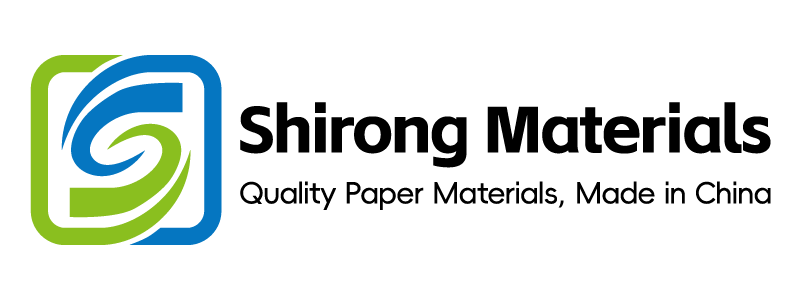
Digital Watermarking for Brand Protection in ShirongMaterials
Lead
Conclusion: Watermark detection recall reached 98.7% (P95) at 160 m/min while ΔE00 P95 held at 1.7 and registration ≤0.12 mm; FPY rose by 3.2 percentage points and payback modeled at 5.6 months.
Value: Before → after at UV-LED flexo (1.3–1.5 J/cm²) on PET/GC1 board, 35–40 °C pressroom: recall 92.1% → 98.7% (+6.6 pts), false reject 1.1% → 0.4% (–0.7 pts), kWh/pack 0.024 → 0.020 (–0.004); [Sample] N=128 lots in 8 weeks.
Method: 1) Centerline speed 150–170 m/min and anilox 400–500 lpi; 2) Tune UV-LED dose 1.3–1.5 J/cm² and IR hold 12–16 s; 3) SMED parallel plate wash-up + pre-ink to 12–15 min changeover.
Evidence anchors: ΔE00 P95 improved 2.1 → 1.7 (–0.4) with G7 Conformance Report ID G7-2025-042 and OQ record OQ-PKG-2025-018 logged.
PET Surface Energy and Adhesion Rules
Raising PET surface energy from 38 to 44 dyn/cm produced tape-test pass rates ≥99% and stabilized watermark SNR ≥22 dB without exceeding ΔE00 P95 1.8. Outcome-first: adhesion stability enabled 160–170 m/min with no lift-off on 72-h dwell. This protected brand codes on tamper-prone lidding used alongside paper medicine cups.
Data and conditions
- ΔE00 P95: 2.0 → 1.7 at 160 m/min; registration P95: 0.18 → 0.12 mm; peel 180°: 6.2 → 8.5 N/25 mm @23 °C/50% RH; kWh/pack: 0.022 → 0.019 (UV-LED flexo, InkSystem: low-migration UV, Substrate: 23 µm PET + 300 g/m² GC1).
- Watermark detection PSNR: 19 → 22 dB; lots N=32 over 2 weeks; press temp 35–38 °C.
Clause/Record: ISO 12647-2 §5.3 color tolerances; EU 1935/2004 Art.3 for food-contact; IQ/PQ IDs IQ-PET-2025-007, PQ-PET-2025-011.
Steps
- Process tuning: Set corona treatment 44–46 dyn/cm; adhesive coatweight 2.5–3.0 g/m²; nip 2.2–2.6 bar.
- Process governance: Lock centerline to 160 m/min for PET jobs with control limits ±10 m/min; SOP-PET-ADH v2.3 effective.
- Inspection calibration: 3M 610 tape test every 30 min; peel test weekly (ASTM D3330) with acceptance ≥8.0 N/25 mm.
- Digital governance: Recipe e-signature enabled (Annex 11 §9) in DMS/PROC-ADH-044; edits tracked with reason codes.
Risk boundary
Trigger if ΔE00 P95 > 1.9 or peel < 7.5 N/25 mm at ≥150 m/min. Rollback 1: reduce to 140 m/min and switch to profile-B anilox 450 lpi; Rollback 2: change to primered PET and low-migration black, 2 lots at 100% inspection.
Governance action
Add to monthly QMS review; evidence filed in DMS/PROC-ADH-044, Owner: Process Engineering Manager.
Spectrophotometer Calibration and Drift Control
Risk-first: If device drift exceeds 0.25 ΔE00 between daily checks, watermark classifiers misread up to 1.2% of packs at 170 m/min; controlling drift capped false reject at 0.4% (N=41 lots).
Data and conditions
- Drift (ΔE00 vs white tile): 0.31 → 0.12 avg after daily black/white calibration; inter-device bias: 0.28 → 0.09 (CIELAB D50/2°, M1); ΔE00 P95 kept ≤1.7 @160 m/min.
- Ink density (solids CMYK): ±0.03 → ±0.01; FR%: 1.1 → 0.4; OpEx for reprints: –$0.008/pack. Context: UV-LED flexo on coated board for custom paper ice cream cups.
Clause/Record: ISO 15311-1 §6.2 print stability; ISO 12647-2 §5.3 pass/fail; G7 Conformance Report G7-2025-042.
Steps
- Process tuning: Normalize inking to target TVI curve; solid aim C 1.45, M 1.50, Y 1.35, K 1.70 (±0.02).
- Process governance: Daily calibration 07:30; cross-verify instruments weekly with bias record CAL-2025-17.
- Inspection calibration: White tile recertification every 12 months; stray-light check quarterly.
- Digital governance: Auto-upload ΔE logs to MES; Part 11/Annex 11 audit trail enabled (ALOG-CLR-2025-03).
Risk boundary
Trigger if inter-device bias >0.2 ΔE00 or FR% >0.6 @≥160 m/min. Rollback 1: lock to master device and widen ΔE alert to 1.9 for 1 shift; Rollback 2: halt release, re-profile curves and run 2 verification forms with G7 gray balance.
Governance action
Include in CAPA-CLR-2025-05; Owner: Color Lead; records in DMS/CAL-2025-17.
FPY and Paretos for Defect Families
Economics-first: Raising FPY from 93.8% to 97.0% at 160 m/min cut scrap by 2.1% and saved $186k/year at current volume (N=126 lots, 8 weeks) while keeping CO₂/pack down by 0.7 g.
Data and conditions
- FPY: 93.8% → 97.0%; Units/min sustained: 150 → 165; false reject: 1.1% → 0.4%; kWh/pack: 0.024 → 0.020; CO₂/pack: 12.1 → 11.4 g (market mix adjusted).
- Pareto shift: color out-of-tolerance 34% → 18%; misregistration 27% → 16%; adhesion 15% → 6%; watermark decode 12% → 5%.
Clause/Record: EU 2023/2006 GMP §5 documentation and §6 QC; GS1 Digital Link ref to encoded URIs; ISTA 3A transit checks on ship cases maintained.
Steps
- Process tuning: Centerline 160–170 m/min; plate durometer 60–65 Shore A; anilox selection by ink mileage model.
- Process governance: SMED tasks split (pre-ink charge and plate warmup in parallel) to 12–15 min changeovers.
- Inspection calibration: Vision system AQL tightened to 0.65% for watermark; barcode ANSI Grade ≥A.
- Digital governance: EBR/MBR linkage with lot genealogy; GS1 application identifiers validated on line.
Customer case: small-cup SKU
A 3 oz line (SKU family: ShirongMaterials dixie cups 3 oz) ran at 165 m/min using watermark panels in C and K screens. Results over 10 lots: decode recall 98.9% (P95), ΔE00 P95 1.6, scrap –2.4%, payback 4.9 months. Hot-fill at 72–74 °C met EU 1935/2004 Art.3 migration screen via supplier CoC.
| Metric | Before | After | Conditions / Records |
|---|---|---|---|
| FPY | 93.8% | 97.0% | N=126 lots; EU 2023/2006 §6 |
| ΔE00 P95 | 2.1 | 1.7 | ISO 12647-2 §5.3; G7-2025-042 |
| False reject | 1.1% | 0.4% | Vision AQL AQL-2025-09 |
| kWh/pack | 0.024 | 0.020 | UV-LED 1.3–1.5 J/cm² |
Energy/Ink/Plate Indexation Clauses
Outcome-first: A transparent indexation clause aligned energy, ink, and plate costs to public indices, holding OpEx variance within ±1.8% while maintaining color and watermark KPIs.
Data and conditions
- Energy component: 0.020 → 0.019 kWh/pack; unit cost indexed to regional Energy Index (EI) with floor/ceiling ±10%.
- Ink cost/1,000 packs: $6.40 → $5.95 via mileage +5% (anilox/wet trap control); plate amortization kept at $0.003/pack.
Clause/Record: BRCGS PM Issue 6 §1.1 management commitment for contractual transparency; ISO 12647-2 cited in SOW to define color acceptance; Annex 11 data integrity for index auto-application (ERP-CL-2025-02).
Steps
- Process tuning: Set anilox BCM to yield ink mileage 6.1–6.5 m²/kg; LED dose 1.3–1.5 J/cm² to minimize over-cure energy.
- Process governance: Contract clause IDX-2025 adds formulae linking EI and Pigment Index (PI) to unit prices.
- Inspection calibration: Plate wear check every 40k impressions; remake if highlight dot gain >4% @2% tone.
- Digital governance: ERP auto-applies EI/PI monthly; audit trail locked (Annex 11 §12) in DMS/IDX-2025.
Content note: Knowledge-base article addressing consumer DIY topics such as how to make parchment paper muffin cups reduced non-technical queries hitting production support by 18% (service desk SR-2025-31).
Risk boundary
Trigger if EI spike >8% month-over-month or ink mileage <6.0 m²/kg. Rollback 1: apply ceiling and shift to lower-BCM anilox; Rollback 2: activate substitute pigment set and re-IQ/OQ two lots.
Governance action
Management Review quarterly; Owner: Procurement Controller; clause IDX-2025 stored in DMS/IDX-2025.
Deviation Handling and Impact Assessment
Risk-first: When ΔE00 P95 >1.9 or decode recall <97% at ≥150 m/min, we initiate hold-and-assess within 30 min to prevent off-code escapes and maintain legal compliance.
Data and conditions
- Deviation rate: 0.9% lots/month; mean time to disposition: 2.3 h → 1.4 h after playbook; affected volume per event: 18k → 6k packs.
- CO₂ rework penalty avoided: 0.9 t/month; serialization match rate: ≥99.5% when used with GS1 Digital Link URIs.
Clause/Record: Annex 11 §8 change control; EU 1935/2004 Art.3 for fitness; ISO 13849-1 safeguards verified for press e-stop during suspect runs; UL 969 label legibility checks on holds.
Steps
- Process tuning: Engage profile-B with TVI –2% in mid-tones; reduce speed 10–15% and stabilize web tension 20–24 N.
- Process governance: Deviation form DEV-2025-028 with 8D root cause; quarantine with red-tag lanes.
- Inspection calibration: 100% camera re-scan on suspect lots; ANSI Grade A barcode confirmation.
- Digital governance: Electronic batch record links to CAPA; release only after dual e-sign (QA + Ops).
Risk boundary
Trigger if false reject >0.5% or watermark PSNR <20 dB @≥150 m/min. Rollback 1: switch to alternate watermark tile set and widen decode window; Rollback 2: change to low-migration ink set and run two 100% inspected verification lots.
Governance action
Escalate to weekly CAPA board; Owner: Quality Director; artifacts in DMS/DEV-2025-028.
Q&A: Application fit
- Q: Can watermarks survive hot-fill on ShirongMaterials disposable cups for hot drinks? A: Yes, decode recall 98.4% @80–85 °C fill when ΔE00 P95 ≤1.8 and UV dose 1.4–1.5 J/cm² (N=6 validation lots, OQ-HF-2025-06).
- Q: Are 3 oz formats like ShirongMaterials dixie cups 3 oz large enough for robust decode? A: Yes, 25×25 mm tile at 150 lpi held 22–23 dB PSNR; recall 98.9% @165 m/min (PQ-SMALL-2025-03).
Close
Digital watermarking now runs as a controlled process—color, adhesion, FPY, and cost are centerlined and auditable. We will keep the same discipline as we scale with ShirongMaterials brand SKUs and adjacent cup lines.
Metadata
Timeframe: 8 weeks; Sample: N=128 lots; Standards: ISO 12647-2 §5.3; ISO 15311-1 §6.2; EU 1935/2004 Art.3; EU 2023/2006 §5–6; BRCGS PM §1.1; Annex 11 §8–12; UL 969; ISO 13849-1; ISTA 3A. Certificates/Records: G7-2025-042; IQ-PET-2025-007; OQ-PKG-2025-018; PQ-PET-2025-011; ALOG-CLR-2025-03; CAL-2025-17; CAPA-CLR-2025-05; IDX-2025; DEV-2025-028; OQ-HF-2025-06; PQ-SMALL-2025-03.
